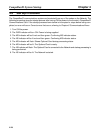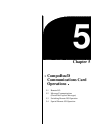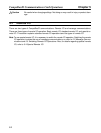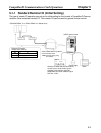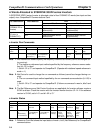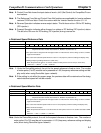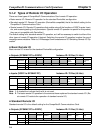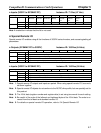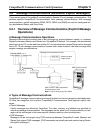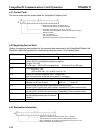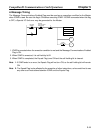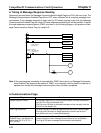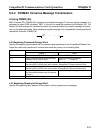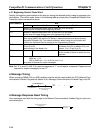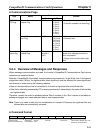
5-8
5-2 Message Communications (DeviceNet Explicit Messages)
There are two types of CompoBus/D communications: Remote I/O and message communications. This
sections explains CompoBus/D Communications Card message communications. With message
communications, specific instructions (SEND, RECV, CMND, and IOWR) are used for reading and writ-
ing data between Master and Slave Units.
5-2-1 Overview of Message Communications (Explicit Message
Operations)
H Message Communications Operations
Message communications enable data to be exchanged as required between nodes (i.e., between
Masters or between Masters and Slaves) on a CompoBus/D Network. For example, the accumulated
data from a given PC can be read from another PC, and constants from various Slaves can be changed
from a PC. To use message communications, however, both nodes involved in the data exchange must
support message communications.
C200HW-DRM21-V1 or
CVM1-DRM21-V1 (Master Unit)
Message communications function
Reading Inverter
output current
3G3FV-series Inverter
3G3FV-PDRT1-SIN CompoBus/D
Communications Card
Note: T-branch wiring using Thin Cables
H Types of Message Communications
CompoBus/D message communications are broadly divided into the two categories described below.
Of these two categories, the Inverter’s CompoBus/D Communications Card supports explicit mes-
sages.
• Explicit Messages
Explicit messages are defined by DeviceNet. The class, instance, and attribute are specified for
executing message communications. The messages are the same for all Inverter products, so mes-
sages can be exchanged in the same way with masters made by other manufacturers.
• FINS Messages
Messages can be exchanged using FINS commands between CompoBus/D nodes (Masters and
Slaves) that support FINS messages. (FINS commands are actually sent and received using Device-
Net explicit messages.)
CompoBus/D Communications Card Operations Chapter 5



